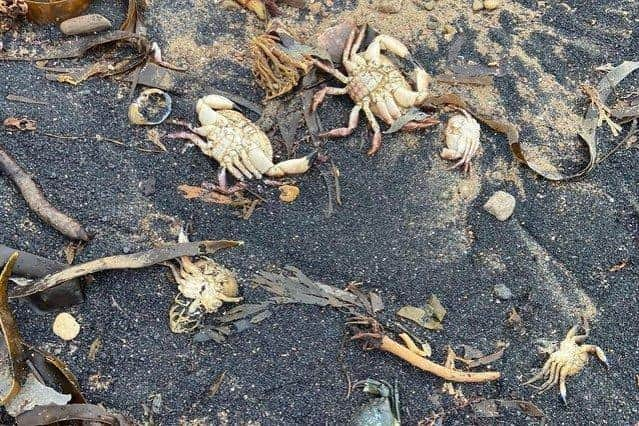Fresh investigation in crab and lobster deaths off Yorkshire coast completed
The dead crustaceans have been washing ashore on the Yorkshire and North East coasts since October last year, and crews claim their livelihoods are at risk because they are struggling to catch enough to cover their costs.
The original investigation, involving a number of government agencies, concluded in February that a naturally-occuring algal bloom was to blame.
Advertisement
Hide AdAdvertisement
Hide AdThe Department for Environment, Food and Rural Affairs (Defra) then agreed to relaunch the investigation and “undertake additional sampling”, but the probe has been completed and it reached the same conclusion.
A spokesman said: “Defra has thoroughly investigated this incident and concluded that a naturally-occurring harmful algal bloom was the most likely cause of the incident.
“We ruled out a number of potential causes including chemical pollution, sewage, animal disease, and dredging.”
However, fishermen in the region and a number of marine biologists have questioned the findings and repeatedly claimed crustaceans died after dredging, done in the River Tees as part of the Teesside Freeport project, released harmful chemicals into the water.


Advertisement
Hide AdAdvertisement
Hide AdA group of fishermen paid for marine pollution consultant Tim Deere-Jones to conduct his own investigation earlier this year and review Environment Agency data.
He disputed the findings of the government investigation and found the water temperature has been too low to sustain large quantities of that type of algae in recent months.
He also said the data, obtained via the Freedom of Information Act, shows that “very high concentrations” of the chemical pyridine were found in samples taken from dead crabs.
In a report, he stated the amount of pyridine found in crabs in Saltburn was more than 70 times higher than the amount taken from a control group in Penzance.
Advertisement
Hide AdAdvertisement
Hide AdThe report added: “Pyridine is released into the environment as a waste product from industrial processes such as steel manufacture, processing of oil shale, coal gas production, coking plants and incinerators.”
Marine biologist Joe Redfern, who is also a project manager at Whitby Lobster Hatchery, does not accept the findings of the government investigation and said he will continue to push for answers as crustaceans continue to wash up dead on beaches in Yorkshire and the North East.
Mr Redfern said: “An algal bloom kills things in two ways. It either causes oxygen levels to crash, because the oxygen gets eaten up by the algae.
“Or it produces these toxins. But with the dilution in the water, there’s just no way that could last for several months.”
Advertisement
Hide AdAdvertisement
Hide AdHe added: “Everybody in the fishing industry is reporting that numbers have completely dropped off a cliff.
“They’re catching nothing and nothing seems to be eating any of the bait. It just seems to be completely desolate.
“Fishing communities are struggling to understand what’s going on and are concerned for the future and their livelihoods.”
Comment Guidelines
National World encourages reader discussion on our stories. User feedback, insights and back-and-forth exchanges add a rich layer of context to reporting. Please review our Community Guidelines before commenting.
